
Legumes are among the oldest cultivated food crops and remain among the most important sources of food worldwide. Peas, beans and lentils are all capable of long-term storage in almost any climate, while most other forms of high quality protein are notoriously perishable. Both beans and lentils are versatile and nutritious.
About Lentils
Lentils are thought to have been the first legumes cultivated and among the very first crops of any type. The plants are short, typically less than two feet in height and produce their seeds two at a time in small pods. There are many varieties grown around the world in a range of sizes and colors. In India and the Middle East, where lentils are a staple, they are considered to be especially digestible and accordingly are fed to invalids and small children. Lentil porridge is often the first solid food given to infants.
About Beans
Beans are among the most numerous families of edible plants, with unique varieties originating in Europe, Asia, Africa and the Americas. Some varieties are consumed young as a vegetable while their pods are tender and juicy. The majority, however, are are eaten as mature seeds. Although many beans have a distinctive flavor, most share a characteristic savory note caused by enzymes breaking down their fatty acids into complex aromatic molecules.
Their Similarities
All legumes share a common structure. The two meaty portions, called cotyledons, provide a nutritional storehouse for the embryonic plant inside. The tough protective skin is made up of insoluble fiber, necessary for the proper functioning of our digestive system. Legumes are uniformly high in protein, with most also containing significant quantities of starches and sugars. Legumes also have a variety of chemical defenses, which is why they are all but invariably eaten cooked. In most cases these chemicals simply interfere with the absorption of nutrients, but a few legumes are actually toxic when raw.
Their Differences
Lentils, because of their thin shape, will generally cook more quickly than beans. Dry beans require presoaking or long cooking because their skins are water-resistant and slow their absorption of cooking water. Some varieties are split and skinned, allowing them to cook as quickly as lentils. Beans are typically larger than lentils and most varieties produce more seeds per pod. Beans are especially high in indigestible sugars, which accounts for their flatulence-inducing reputation. Lentils do not have the same effect.
Related Articles
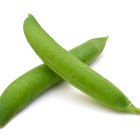
The Difference Between Dried Peas and ...

Can I Add Baking Soda to Soften Peas?

What if You Don't Cook Chickpeas Long ...

Should You Steam or Blanch Bean Sprouts ...
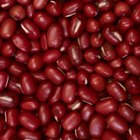
How to Soak Adzuki Beans

How to Cook Beans

Do You Need to Soak Lentils Before ...

Difference Between Soba and Udon Noodles

How to Cook Red String Beans
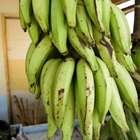
Facts About Plantains
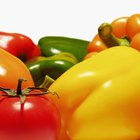
Nutrition Facts About Raw or Cooked ...
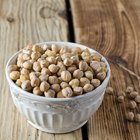
List of Vegetables That Contain Protein ...
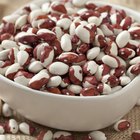
The Nutritional Value of Anasazi Beans ...

Is Wheat Grass an Alkalizing Food?

Differences Between Tapioca Starch and ...
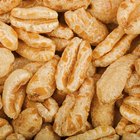
How to Cook With Kamut

The Role of Collagen & Melanin in Skin
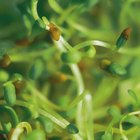
Why Do Sprouts Taste Bitter?

The Nutrition of 15-Bean Soup

Madagascar Vs. Tahitian Vanilla Beans
References
Writer Bio
Fred Decker is a trained chef and prolific freelance writer. In previous careers, he sold insurance and mutual funds, and was a longtime retailer. He was educated at Memorial University of Newfoundland and the Northern Alberta Institute of Technology. His articles have appeared on numerous home and garden sites including GoneOutdoors, TheNest and eHow.
Photo Credits
Polka Dot Images/Polka Dot/Getty Images